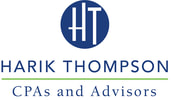|
Officially called the Family and Medical Leave Act, the FMLA is a federal law that makes it a requirement for employers with at least 50 employees to offer unpaid though job-protected leave to any and all eligible employees. There are certainly a number of nuances involved with the FMLA, including what this looks like when it comes to covering employees, the approved reasons as to why employees are permitted to take FMLA-covered leave and the process of requesting as well as approving leave under the FMLA.
According to an SHRM article, it has been shown that “legal experts say the [FMLA] law is full of traps that can snag employers that let their guard down.” Below are a few mistakes to watch out for when working within the guidelines of the FMLA. Not following the FMLA’s notice requirements Under the FMLA, employers are required to provide their employees with crucial notices regarding the FMLA, including the following:
Improper handling of FMLA recertifications If desired, you can require employees who submit requests for FMLA leave, whether for caregiving or recuperation purposes, to also submit valid certification from a medical professional that clearly states the reason behind the request for leave. Once an employee’s FMLA leave request is approved, employers should ask the individual employees for additional medical certification if necessary. However, these types of restrictions are time-sensitive, so employers need to handle them as carefully and diligently as possible. Failing to notify employees of their eligibility for FMLA leave For an employee to qualify for FMLA leave, said employee must adhere to these three requirements:
Although this information can be a challenge to keep track of — not to mention apply to a situation — employers are required to notify both current and rehired employees as soon as they are eligible for FMLA-approved leave. An excellent way of ensuring that you are on top of notifying employees when they become eligible for FMLA leave is by implementing reputable HR software. Additional dangers
Ultimately, employers should ensure that they consider additional laws, such as applicable state, family or medical leave laws, when determining the FMLA eligibility of employees. As an employer, make it a priority to work with qualified professionals who can ensure that, as a business, you are in compliance with FMLA obligations. Comments are closed.
|
Newsletter articles are posted every 2 weeks. If you would like to have our e-newsletter delivered directly to your inbox, please sign up. Your information is confidential; you can unsubscribe at any time. Subscribe. Categories
All
|
Proudly powered by Weebly

 RSS Feed
RSS Feed